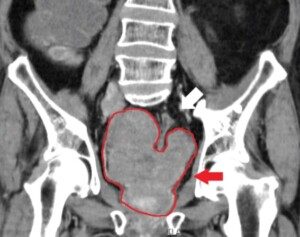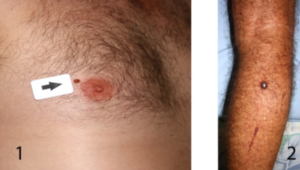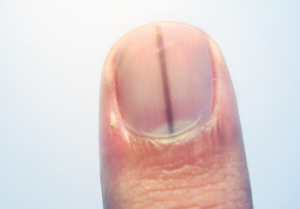Reaching for a high shelf can worsen the pain of a rotator cuff injury for several reasons.
The movement involves significant strain on the shoulder’s muscles and tendons, which are already damaged or inflamed from the injury.
We hear “rotator cuff” a lot, but what exactly is this?
It consists of four muscles and their tendons. Tendons attach muscles to bone. These four shoulder muscles are:
- Supraspinatus
- Infraspinatus
- Teres minor
- Subscapularis
They stabilize the shoulder joint and facilitate a wide range of arm movements that are common in everyday life as well as strength training motions and the motions of sport.
When these muscles are injured, their ability to support the shoulder and manage movements is compromised.
Reaching overhead can aggravate an already weakened rotator cuff because it increases the mechanical load on the shoulder muscles and tendons.
Shoulder Kinematics During Reaching Movements
When you extend your arm to reach for a high shelf, several joint movements are involved.
This action typically includes shoulder abduction (lifting the arm sideways away from the body) and flexion (moving the arm forward).
As the arm is elevated, the shoulder joint undergoes a complex motion that involves the head of the upper arm bone or humerus (ball of the shoulder) moving in relation to the shoulder blade.
In a healthy shoulder, the rotator cuff muscles work to stabilize the humeral head within the ball socket to prevent dislocation or impingement.
However, when the rotator cuff is compromised, the muscles lose their ability to control this movement, increasing the risk of irritation or further injury to the tendons.
Increased Impingement Risk
One of the most common causes of shoulder pain in rotator cuff injuries is impingement.
This occurs when the tendons of the rotator cuff become pinched between the bones of the shoulder joint, particularly the acromion (a bony prominence on the shoulder blade or scapula).
When the arm is raised above shoulder height, such as during a reach to a high shelf or lifting dumbbells overhead, the space for the tendons to move through becomes smaller.
With a damaged rotator cuff, the tendons are more likely to become compressed, leading to pain and inflammation.
Research has shown that reaching overhead causes the humeral head to shift upward, which can cause the tendons to rub against the acromion, further irritating the tendons or even leading to tears.
A study published in The Journal of Bone and Joint Surgery (2006) found that overhead motions increase the risk of rotator cuff tendinopathy or tendon injury due to the increased pressure on the tendons when they are already weakened by injury.
Muscle Imbalance and Compensation
Rotator cuff injuries often result in muscle imbalances, in which some muscles are weaker or more fatigued than others.
When you reach for a high surface, the muscles that aren’t functioning properly are forced to compensate, which places more strain on them.
The deltoid shoulder muscle may take on an excessive amount of work in lifting the arm, leading to further muscle fatigue and strain.
This compensation can also alter the mechanics of the shoulder joint, making it more susceptible to irritation or further injury.
Additionally, the injured rotator cuff muscles may not be able to control the motion of the shoulder as effectively, leading to abnormal movements.
This can cause the joint to move in ways that exacerbate the existing damage and create additional inflammation in the tendons, particularly in the area of the supraspinatus tendon, which is most commonly affected in rotator cuff injuries.
Inflammation and Pain

Freepik
The repeated use of the shoulder during overhead motions in daily life or at the gym increases inflammation in the injured tendons.
Tendons that are already inflamed due to rotator cuff problems are more vulnerable to additional irritation.
Reaching or lifting overhead also places significant strain on the bursa, fluid-filled sacs that help reduce friction between the tendons and bones.
When the rotator cuff is injured, the bursa may become inflamed, which increases pain and further limits shoulder movement.
In cases of chronic rotator cuff injuries, inflammation can persist and lead to a vicious cycle of pain, stiffness and weakness.
Conclusion
Rotator cuff problems take notoriously long to heal to pre-injury level, even if there isn’t an outright tear that requires surgery.
People tend to be impatient when it comes to treating a painful shoulder, perhaps because we need shoulder movement so frequently in everyday life.
It’s also quite demoralizing when a bum shoulder prevents a fitness enthusiast from performing classic strength training moves such as the bench press, dumbbell press, overhead press and the seated dip.
There’s no way around it: A rotator cuff injury will require months to heal, and you need to be very patient; tendons take much longer to heal than do muscles.
If you absolutely must make overhead reaching motions in your daily life, you can subtract some of the strain by keeping your hand in a palm-up position rather than palm-down or even neutral (palm-sidways).
The palms-up position keeps the space in the shoulder more open, reducing impingement.
Everyday Movement Patterns that Can Hurt the Rotator Cuff, and How to Relieve Pain
 Lorra Garrick is a former personal trainer certified by the American Council on Exercise. At Bally Total Fitness, where she was also a group fitness instructor, she trained clients of all ages and abilities for fat loss and maintaining it, muscle and strength building, fitness, and improved cardiovascular and overall health.
Lorra Garrick is a former personal trainer certified by the American Council on Exercise. At Bally Total Fitness, where she was also a group fitness instructor, she trained clients of all ages and abilities for fat loss and maintaining it, muscle and strength building, fitness, and improved cardiovascular and overall health.
.










































